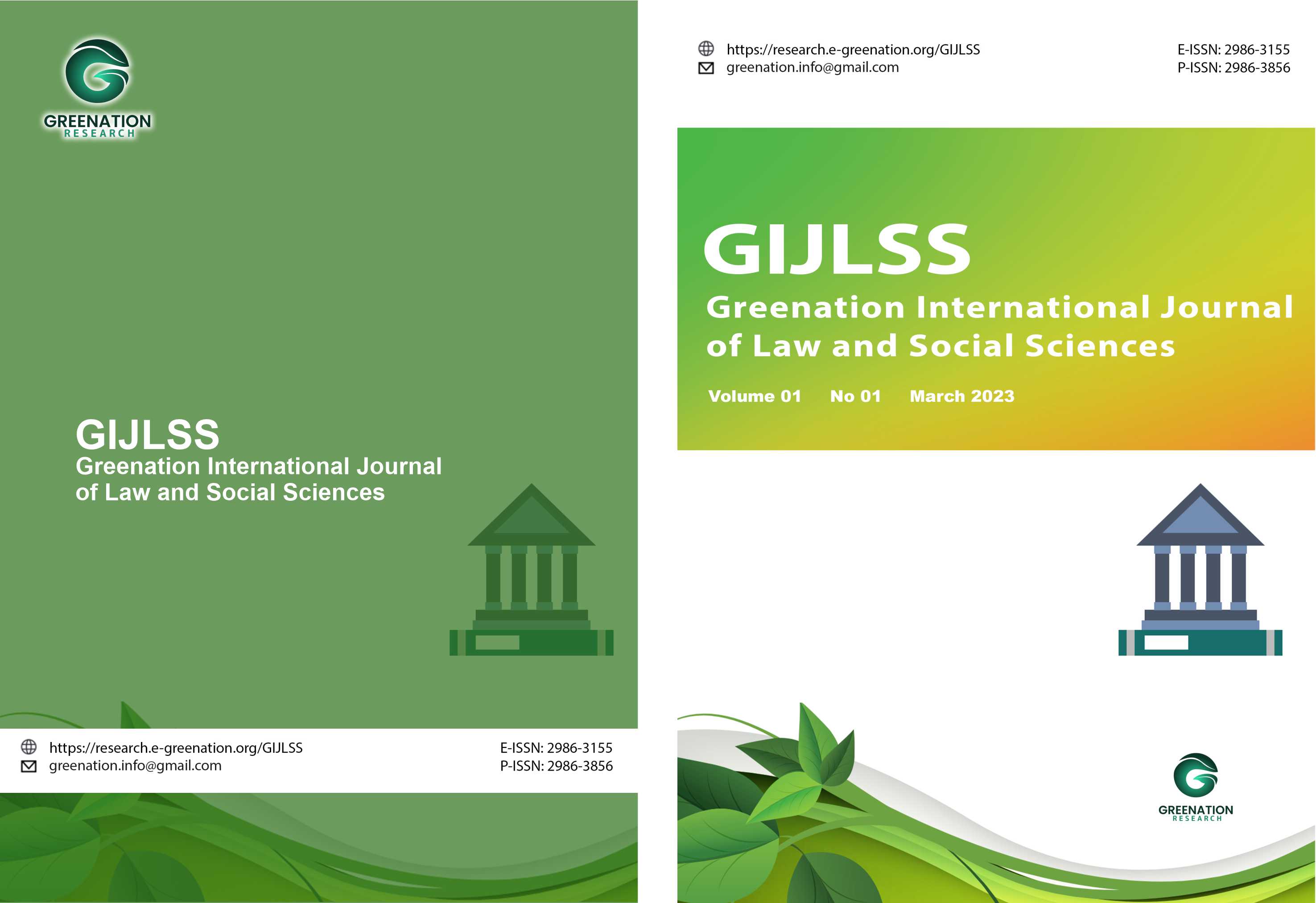Cryptographic Technology and Anti-Money Laundering Policies Against the Sale of Drugs Using Bitcoin Transactions
DOI:
https://doi.org/10.38035/gijlss.v2i4.321Keywords:
Cryptography Technology, Anti-Money Laundering (AML), Digital Drug Trafficking.Abstract
This research aims to analyze the influence of cryptographic technology and the effectiveness of Anti-Money Laundering (AML) policies on countering Bitcoin transaction-based drug trafficking in Indonesia. Using a normative legal research method with a desk study approach, this study evaluates the contribution of cryptography to transaction security, challenges in monitoring, and weaknesses in AML policies in Indonesia. The results show that cryptographic technology enhances the security and efficiency of transactions through blockchain, but its anonymity is utilized in illegal activities. In addition, AML policies in Indonesia still face implementation challenges, such as low compliance with Know Your Customer (KYC) principles and minimal supervision of cryptocurrencies. This research recommends strengthening regulations and international cooperation as strategic steps in tackling digital crime.
References
Abidin, D. Z. (2015). Kejahatan dalam Teknologi Informasi dan Komunikasi. Jurnal Processor, 10(2), 509–516.
Antonopoulos, A. M. (2014). Mastering Bitcoin: unlocking digital cryptocurrencies. “ O’Reilly Media, Inc.”
Ariawan, I. G. K. (2013). Metode Penelitian Hukum Normatif. Kertha Widya, 1(1).
Bonneau, J., Miller, A., Clark, J., Narayanan, A., Kroll, J. A., & Felten, E. W. (2015). Sok: Research perspectives and challenges for bitcoin and cryptocurrencies. 2015 IEEE Symposium on Security and Privacy, 104–121.
Bray, J. (2016). Anonymity, Cybercrime and the Connection to Cryptocurrency. Eastern Kentucky University.
Flick, U. (2022). An introduction to qualitative research.
Force, F. A. T. (2019). Guidance for a risk-based approach to virtual assets and virtual asset service providers. Retrieved, 12, 2023.
Gao, W., Hatcher, W. G., & Yu, W. (2018). A survey of blockchain: Techniques, applications, and challenges. 2018 27th International Conference on Computer Communication and Networks (ICCCN), 1–11.
Gudgeon, L., Perez, D., Harz, D., Livshits, B., & Gervais, A. (2020). The decentralized financial crisis. 2020 Crypto Valley Conference on Blockchain Technology (CVCBT), 1–15.
Narayanan, A. (2016). Bitcoin and cryptocurrency technologies: a comprehensive introduction. Princeton University Press.
Narayanan, A., Bonneau, J., Felten, E., Miller, A., & Goldfeder, S. (2006). Bitcoin and Cryptocurrency Technologies. Information Systems Journal, 8(4), 153–181. http://doi.wiley.com/10.1046/j.1365-2575.1999.00061.x%5Cnhttp://dx.doi.org/10.1016/j.im.2014.10.003%5Cnhttp://onlinelibrary.wiley.com/doi/10.1046/j.1365-2575.2000.00082.x/full%5Cnpapers3://publication/doi/10.1046/j.1365-2575.2000.00082.x%5Cnhttp://www.inf
Polri, P. (2024). Untuk Para Bandar dan Pengedar Narkoba, BNN: Jangan Main-main dengan Negara. Pusiknas Polri. https://pusiknas.polri.go.id/detail_artikel/untuk_para_bandar_dan_pengedar_narkoba,_bnn:_jangan_main-main_dengan_negara#:~:text=30 September 2024.-,Adapun jumlah orang yang dilaporkan terkait kasus,4.865 orang pada September 2024.
Reddy, E., & Minnaar, A. (2018). Cryptocurrency: A tool and target for cybercrime. Acta Criminologica: African Journal of Criminology & Victimology, 31(3), 71–92.
Rotty, N. W., Cahyani, A., Nabila, D. K., & Komala, C. (n.d.). Pemanfaatan Cryptocurrency Dalam Tindak Pidana Pencucian Uang revolusi digital , perkembangan dan kemajuan teknologi dalam berbagai bidang bentuk enkripsi digital atau lebih dikenal dengan cryptocurrency . 1 Cryptocurrency kalinya pada tahun 2008 dalam ma. 137–152.
Sinaga, K., Hukum, F., & Udayana, U. (n.d.). TINJAUAN KRIMINOLOGI TERKAIT POTENSI TINDAK PIDANA PENCUCIAN UANG MELALUI MATA UANG VIRTUAL ( CRYPTOCURRENCY ). 12(4), 376–388.
Soehartono, & Pati, U. K. (2019). The Regulation of Cryptocurrency Investation in Indonesia. 358(September 2017), 209–212. https://doi.org/10.2991/icglow-19.2019.54
Trafficking, H. (2021). United Nations Office on Drugs and Crime. Vienna
Downloads
Published
How to Cite
Issue
Section
License
Copyright (c) 2025 Firman Hermansyah, Ahmad Fajar, I Ketut Margayasa, Syahril Syahril, Imas Rosidawati

This work is licensed under a Creative Commons Attribution 4.0 International License.
Copyright :
Authors who publish their manuscripts in this journal agree to the following conditions:
- Copyright in each article belongs to the author.
- The author acknowledges that the Greenation International Journal of Law and Social Sciences (GIJLSS) has the right to be the first to publish under a Creative Commons Attribution 4.0 International license (Attribution 4.0 International CC BY 4.0).
- Authors can submit articles separately, arrange the non-exclusive distribution of manuscripts that have been published in this journal to other versions (for example, sent to the author's institutional repository, publication in a book, etc.), by acknowledging that the manuscript has been published for the first time at GIJLSS.
























